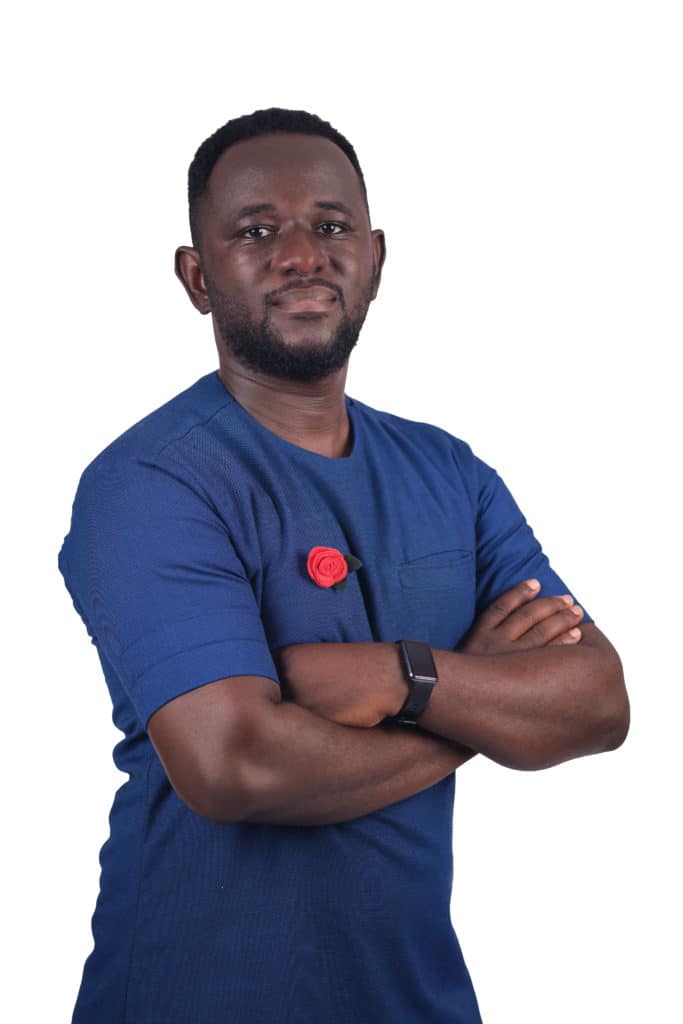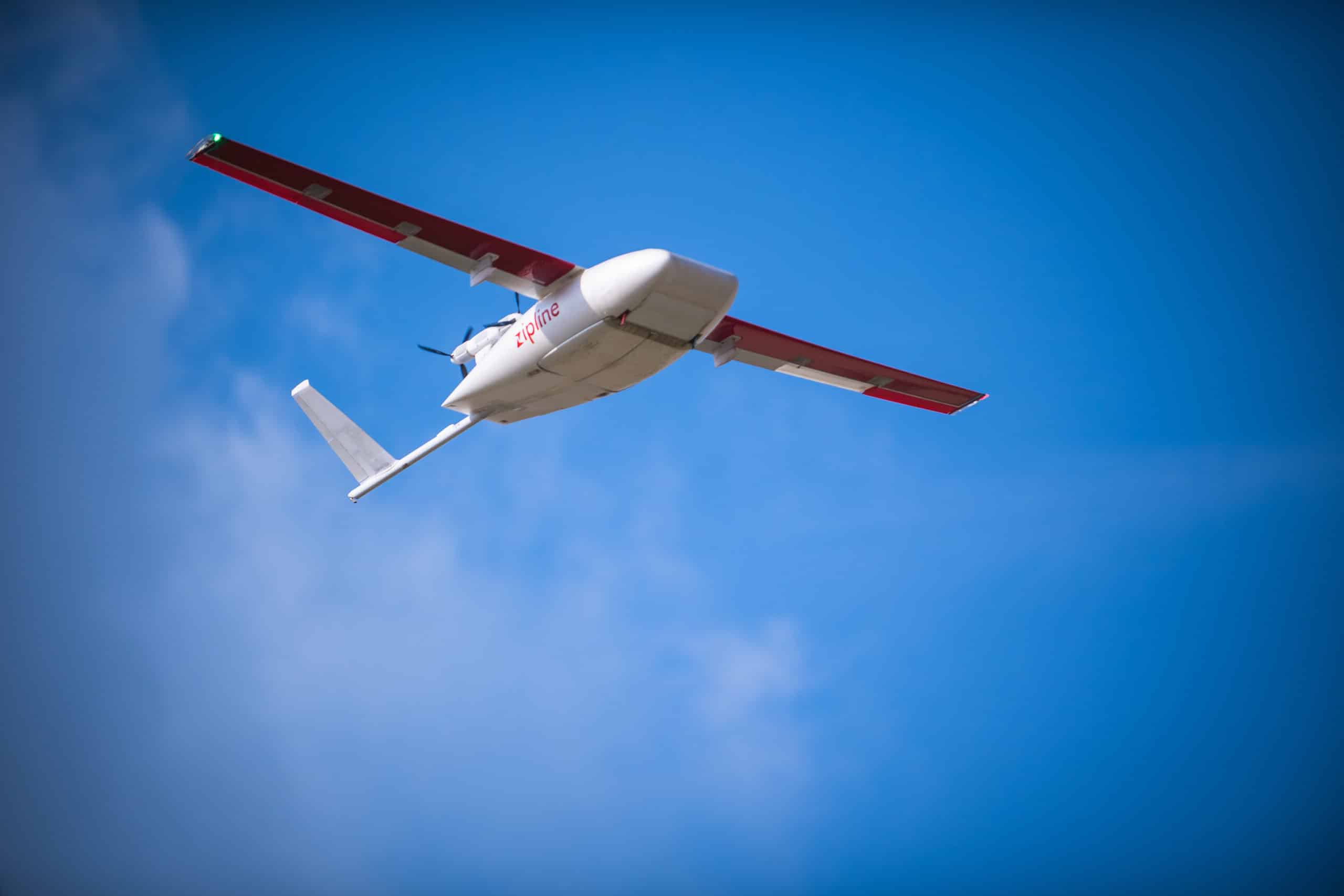Daniel Marfo is managing operations in Africa for Zipline, ensuring that life-saving medical products are sent almost instantly to inaccessible areas using drones. The company has operated 300,000 flights in Ghana and Rwanda over the last five years. Up next: Kenya and Côte d’Ivoire, also alleviating food insecurity on the continent.
When logistics system Zipline began operations in Africa, it piqued the interest of Daniel Marfo, a Ghanaian pharmacist, because he wanted to use technology to solve healthcare issues in the developing world.
He saw a chance to solve a logistical challenge; with all the roads that need constructing and maintenance in Africa, he knew infrastructure development would take too long, and so he joined Zipline in October 2018.

It was a long road from the world of pharmaceuticals, but with the same purpose: helping save lives.
As Senior Vice President of Zipline’s operations in Africa, at 35 years old, he is leading the market efforts across the continent, expanding the company’s reach geographically and expanding the use cases for drones.
When Marfo began, he made a point to visit as many rural areas of Ghana before deploying the technology – once having to take a ferry, followed by canoes and a long hike.
“The people, they’re dependent on whatever means of transportation that exist to be able to access their medications. When we started service, and they received their first supply of medications by drone, it was remarkable, you had just changed their lives,” he says.
He refers to a small village called Gbintri in the north eastern region of Ghana. Anytime it rains, access to roads gets cut off, and the health facility shuts down.
In 2019, it was the first time the health facility didn’t shut down.
A challenge they faced was integrating a new system into an old way of operating; so Zipline created a department called systems integration, which looked at ways to merge drone technology with existing health systems and existing aviation systems.
It’s one of the hardest parts, he says, as they’re asking airspace regulators to allow hundreds of drones to fly every day.
Another challenging aspect has been community integration, as a lot of people in the rural areas have never seen a drone until now. He says the first impression of drones from people was that they were military or spy vehicles.
Marfo now takes dummy drones into the communities and uses community champions to explain the functions of the service.
When they launched the fifth center in Ghana, they were connecting to a health facility. Two elderly gentlemen happened to be sitting under a tree, enjoying the day. A drone swooped in, dropped the package, catching them by surprise, as they together exclaimed that “God had just delivered something from heaven”.
Health staff had to explain that this is the new way they receive medication – and they were still blown away.
When speaking about the potential of drone use in Africa, Marfo mentions that the airspace in Africa isn’t as busy as Europe or America – positing that in the future, Africa could have the most advanced drone network and regulatory systems.
Zipline has operated 300,000 flights in Ghana and Rwanda combined over the last five years. Usually, the flights are round trips of 100 or more kilometers.
They started using it to deliver blood in Rwanda, and realized they could use it for medical products.
When Covid hit, they delivered over a million doses of vaccines in Ghana.
In Ghana, 70,000 malaria test kits and nearly 1.3 million courses of malaria treatment were delivered partnering with Ghana’s Health Service. In five months, 5,000 malaria vaccines were transported to piloted districts by May 2022.
“In Africa, the other use case that resonated deeply with me was food security. If I can make sure that people have access to food and [their] livelihood, I’m actually fulfilling 50% of our healthcare mission.”
In January 2022, they piloted their agriculture use case, focusing on animal health, delivering semen for artificial insemination in pigs. They extended the use case to delivering animal vaccines.
He adds that they have scaled to sending nutrients for kids two years old and younger in rural areas.
“It’s just become an amazing way of how drones have morphed from being seen as a spy or a military tech to a recreational tech, and now, it’s really a life-transforming tech.”
Soon, they will open operations in Kenya, beginning with Kisumu, a port city on Lake Victoria. From there, they can reach 13 counties from one location. They are also moving to Côte d’Ivoire.
“We are very excited about our planned expansion into the Ivory Coast. It’s the first French-speaking country that we are entering…It also brings about its own set of challenges, cultural understanding and cultural integration.”
Marfo says if they want to be a truly global company, this is part of the evolution.
In June 2022, they commissioned the first distribution center in Nigeria in Kaduna State. He says the uptake of the service has been good, with medical products, vaccines and blood being distributed.
There’s been a lot of interest in agricultural use cases in Nigeria too, and they are planning to open another facility in Bayelsa State by the first quarter of 2023, as well as Cross River State. There was flooding affecting 33 out of 36 states in Nigeria by October 2022.
“No one prays for natural disasters, but in case it ever comes again, we are in a position to bring at least some relief to people during such a difficult time.”
In Rwanda, from February to November, the company introduced animal health deliveries, which now make up 17%-18% of deliveries.
“Sixty percent of the population in sub-Saharan Africa are farmers, and so, we are making sure that farmers are able to get the vaccines for the animals so that they don’t lose any of these animals, to be able to get them better semen so that they can get a better breed of animals, which generates more meat, means that we are actually changing the economy of these people’s lives.”
If the farmers are earning $10 a month from agriculture, he posits they may be earning double with the addition of drone technology. These are the use cases that excite him; technology that is not just saving lives with much-needed blood for transfusions or vaccines, but improving food security and putting more money in the hands of the people who matter, and who are the bulk of the population of the continent.
In Ghana, they also began focusing on poultry vaccines for farmers, specifically for Newcastle disease, in partnership with CowTribe – a Ghana-based for-profit organization focused on supporting livestock farmers via a mobile platform.
“Newcastle’s disease ravages about 70% of the chicken population, and it’s really terrible. But over the last few months, we’ve been able to make sure that farmers within our catchment areas have been able to get all their vaccines and they haven’t lost animals.”
For some, this is going to be the first time in years that the disease didn’t affect most of their flock. Marfo says around Christmas, farmers sell a lot of chicken and beef, and this will put more money in their pockets.
By September, Zipline and a leading e-commerce platform Jumia partnered up in Ghana to deliver retail products, with the goal of expanding into the other countries Jumia operates in.
“In increasing access for consumers, we’re also helping the small and medium businesses that use Jumia grow.”
The partnership makes Jumia’s existing logistics system more efficient and sustainable as the electric fleet reduces carbon emissions by 98% compared to delivery by car, according to Marfo.
“I think we are at that point where we did healthcare for five years, we’ve added on agriculture and even with agriculture we are just scraping the surface.”
When he began at Zipline four years ago, they were delivering a product to a health facility every four minutes. Now, they deliver every two minutes.
He wants to continue working on improving in terms of use cases, volume and scale – and make it so every minute, someone is getting a necessary or life-saving product.
